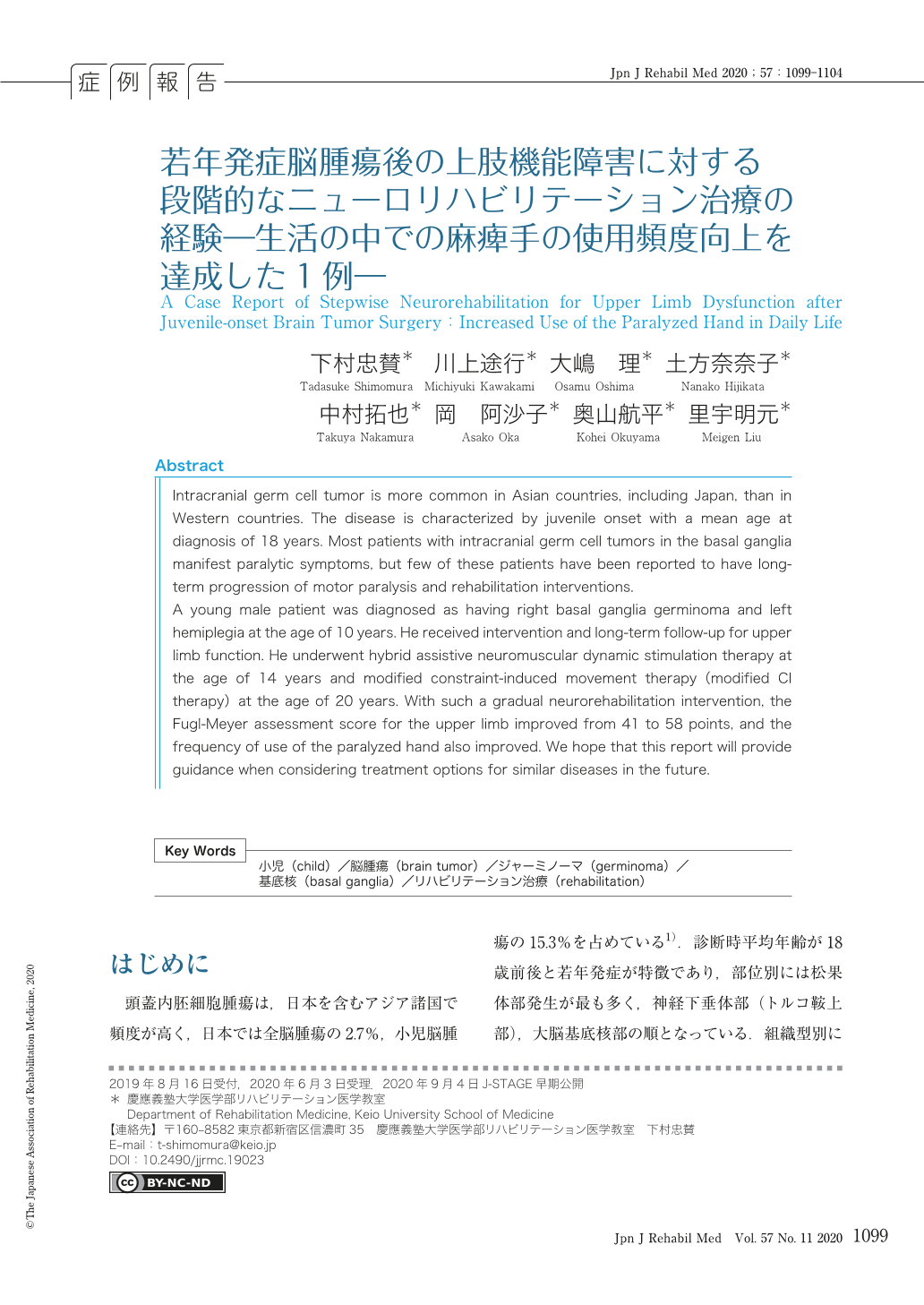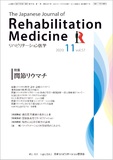Japanese
English
- 販売していません
- Abstract 文献概要
- 1ページ目 Look Inside
- 参考文献 Reference
はじめに
頭蓋内胚細胞腫瘍は,日本を含むアジア諸国で頻度が高く,日本では全脳腫瘍の2.7%,小児脳腫瘍の15.3%を占めている1).診断時平均年齢が18歳前後と若年発症が特徴であり,部位別には松果体部発生が最も多く,神経下垂体部(トルコ鞍上部),大脳基底核部の順となっている.組織型別には,ジャーミノーマが最も多く(50〜60%),次に混合性胚細胞腫瘍が多い1, 2).一般的に,脳腫瘍は発症部位により異なった症状,機能障害を呈する.基底核部に発生する頭蓋内胚細胞腫瘍の80%がジャーミノーマであり,神経学的所見として90%で麻痺症状を呈するとされる3).治療法は化学療法と放射線療法の併用が主流であり,5年生存率は95%以上と生命予後は非常に良好である4).本腫瘍における早期診断法や治療法に関する報告は数多くあるが,運動麻痺に対するリハビリテーションの報告はほとんどない.若年者の上肢機能障害は日常生活動作の困難のみならず,就学や就職にも影響するため,上肢機能の回復は患者のライフイベントにおいても重要である.
今回われわれは,長期にわたり上肢機能に関する経過観察を行い,段階的なニューロリハビリテーション治療を施行したことで,日常生活において麻痺手の使用頻度の向上を達成した1例を経験したので報告する.
なお,本症例報告にあたり,患者本人に説明のうえ,ご同意をいただいている.
Intracranial germ cell tumor is more common in Asian countries, including Japan, than in Western countries. The disease is characterized by juvenile onset with a mean age at diagnosis of 18 years. Most patients with intracranial germ cell tumors in the basal ganglia manifest paralytic symptoms, but few of these patients have been reported to have long-term progression of motor paralysis and rehabilitation interventions.
A young male patient was diagnosed as having right basal ganglia germinoma and left hemiplegia at the age of 10 years. He received intervention and long-term follow-up for upper limb function. He underwent hybrid assistive neuromuscular dynamic stimulation therapy at the age of 14 years and modified constraint-induced movement therapy (modified CI therapy) at the age of 20 years. With such a gradual neurorehabilitation intervention, the Fugl-Meyer assessment score for the upper limb improved from 41 to 58 points, and the frequency of use of the paralyzed hand also improved. We hope that this report will provide guidance when considering treatment options for similar diseases in the future.

Copyright © 2020, The Japanese Association of Rehabilitation Medicine. All rights reserved.


